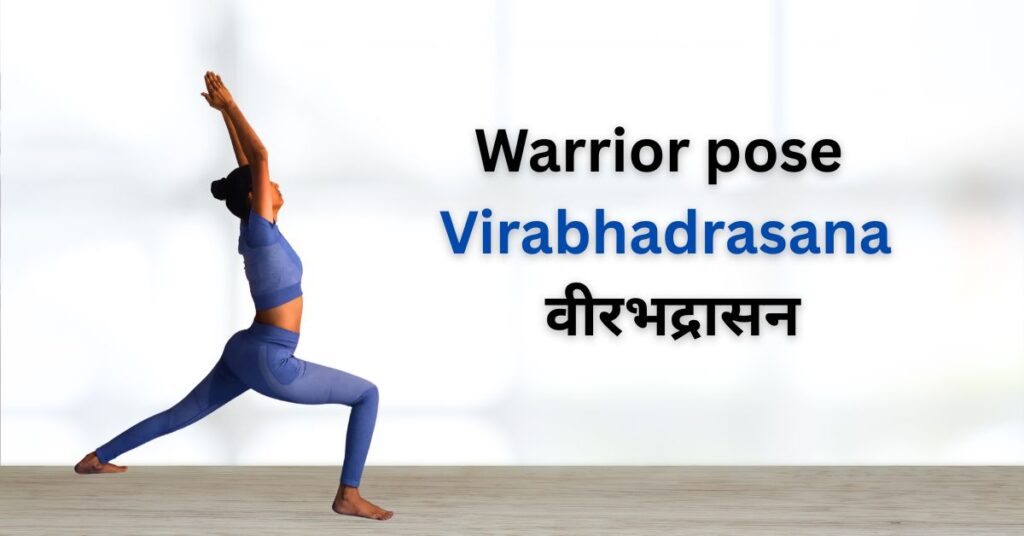Warrior pose | Virabhadrasana | वीरभद्रासन –

According to Hindu mythology, Veerbhadra was the name of a ‘warrior’ created by Lord Shiva. As a result of Lord Shiva’s creation of the fiercest warrior, this pose is known as ‘Virabhadrasana’ or ‘Warrior’ Pose. ‘Vira’ means ‘Hero’ or ‘Warrior’ in Sanskrit. ‘Vigorous’ and ‘Courageous’ are synonyms for ‘Bhadra,’ which means ‘good’ or ‘auspicious.’ This pose is the first variation among the many under-warrior poses and is considered a powerful posture, replicating the power of a warrior. All schools of yoga emphasise the importance of practicing this pose because it is part of the standing poses, which include balance, stability, and stamina.
To balance the body with feet wider than hip-distance apart and arms raised above the head while gazing at them, one must connect the body with the breath. Practicing the alignment of the feet, knees, and torso marks a great pose for adding beauty to one’s body.
Step-by-step guide for virbhadrasana –
- As you come up from Adho Mukha Svanasan, bring your left foot close to your palms and look up.
- Inhale and raise your arms above the shoulders and head, bringing them into Namaste pose, Bend your left knee, and look up. Completely exhale here.
- Check that the right foot is turned inside to about 20 degrees and the left foot is turned out to 90 degrees. Bend your left knee and extend your arms upward, feeling the stretch in your abdomen.
- Staying here for 6 rounds of breathing is critical because the stretch around the upper leg and thighs, the entire abdomen, and the arms will help tone the muscles and eventually reduce fat.
Benefits of Virbhadrasana –
- Because this pose requires you to spread your legs wider than hip distance, the knee and ankle are the foundation for balance in Warrior Pose I. As a result, the knees and ankles are flexed, which improves posture. The flexing of the hips serves as the foundation of the pose, and it brings additional benefits not only to balance the posture but also has its own set of physical benefits.
- Flexing the knees, ankles, hips, shoulders, elbows, entire spine, and neck helps to keep them strong, while contraction of the muscles around these joints strengthens them.
- This pose’s expansion and extension of the thighs, hips, shoulders, arms, and neck burns excess fat and keeps these muscles toned while adding a tremendous toned look to the body.
- As Virabhadrasana I is compared to a warrior pose, practicing this pose with perfect awareness, building stability and stamina, aids in the development of self-confidence.
- The deep stretch of the entire body leads to a gradual increase in flexibility, which is required for the practice of various other advanced-level poses.
- When the muscles, including the abdominal muscles, are activated, the digestive and reproductive systems improve their functions, reducing indigestion and reproductive problems.
- The deep stretch of the arms above your head in Virabhadrasana I or Warrior Pose I stretches the shoulders and neck equally, reducing stiffness. This reduction in stiffness also improves the body’s energy levels, making it feel completely light.
Contraindications –
- People with back pain or circulatory problems should not attempt this asana without first consulting a doctor.
- Practitioners with ear problems should avoid this asana unless they consult a doctor first.
- People with arthritis should only do this asana under the supervision of a doctor.
- This asana should not be done during menstruation or pregnancy.
Virabhadrasana serves as a foundational pose that can be used to create other postures. It boosts energy levels in the body, making it a perfect addition to flow yoga sequences.